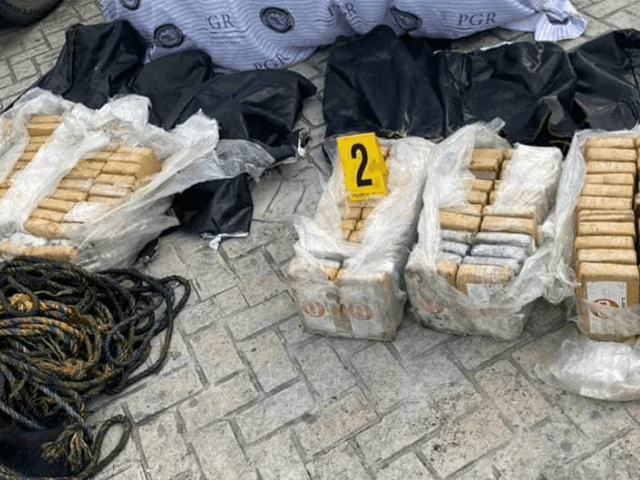The Colombian Defense Ministry announced on Saturday that cocaine seizures in 2022 added up to 671 metric tons, which was 1.7 tonnes more than the already record-setting total from 2021.
2021, in turn, bested prodigious totals of 505 tonnes from 2020 and 428 tonnes from 2019, according to a Reuters report on the Colombian ministry statement.
“It is necessary to combat the illicit income that comes from drug trafficking, which generates evil in our country,” said Defense Minister Iván Velásquez, alluding to the role of cocaine profits in Colombian political instability.
The United Nations Office on Drugs and Crime (UNODC) reported a 43-percent increase in coca plant cultivation in October, with especially vigorous growth near Colombia’s national borders and seaports, where coalitions of growers, traffickers, and heavily-armed gangs have taken almost complete control.
UNODC described coca cultivation as a threat to biodiversity and a factor in deforestation, noting that much of the cultivation occurs on land that has been nominally reserved for environmental protection. Ironically, environmental concerns also halted the practice of sending aircraft to spray plant-killing compounds over the coca farms to put producers out of business.
The Biden administration enthusiastically endorsed the “holistic approach” to drug trafficking adopted by Colombia’s new leftist President Gustavo Petro – even as Petro was effectively surrendering to the cartels. Petro announced last week that he intends to scale back eradication efforts even further, ostensibly to shift the burden away from small growers and focus on fighting the “industrial farms” of the cartels. In December, Petro literally told farmers it was acceptable for them to keep producing cocaine until his government comes up with “substitute crops” that can sustain their livelihoods, an attitude that made even the Biden State Department uncomfortable.
As the Colombian Defense Ministry statement demonstrates, the Petro-Biden “holistic approach” has been proven a cataclysmic failure, with cocaine riding higher than ever. Part of the problem is that Colombia never followed through on promises to bring more constructive job opportunities to rural areas, so the residents redoubled their efforts to make money by farming cocaine. The size of the coca fields tripled with astounding speed once the practice of spraying the farms was ended.
Bloomberg Business in December declared a “Golden Age of Cocaine,” a period of explosive growth in trafficking and organized crime far beyond the storied reign of Pablo Escobar in the 80s and 90s. Petro’s government effectively does not exist in much of the country. The coca fields are five times as large as they were in Escobar’s heyday.
Escobar’s spiritual successor as the king of Colombian cocaine, Dairo Antonio Usaga “Otoniel” David, pled guilty in a U.S. court last week to running an empire larger than Escobar’s wildest dreams, with billions of dollars in assets and over 200 tonnes of annual cocaine shipments. Otoniel’s cartel was basically a nation with its own tax system and standing army, but he eschewed the flashy kingpin lifestyle made famous by Escobar, instead preferring to ride a donkey to his jungle lair stocked with underage girls.
Colombia is pumping out so much cocaine that it now routinely appears for sale in parts of the world that have never seen it before. Seizures are up by 300 percent in Europe, 1000 percent in Africa, and 1500 percent in Asia.
Battles between feuding cocaine gangs are beginning to resemble full-scale military engagements, and when the cartels are not using heavy weapons against each other, they are gunning down children to punish disobedient families.
Europe, in particular, is doing so much coke that the volume of residue from cocaine consumption in its wastewater has doubled. A good deal of the cocaine surging around the world includes lethal toxic impurities, including the now-infamous practice of mixing deadly opioids like fentanyl into cocaine powder.
“To get it to Europe, traffickers rely primarily on commercial cargo ships sailing across the Atlantic Ocean. That’s allowed them to leverage the main engine of globalization to reach overseas markets with unprecedented scale and efficiency,” Bloomberg noted.
Cocaine profits have long funded Colombian terrorist insurgencies like the Revolutionary Armed Forces of Colombia (FARC) and its progeny. Insurgent groups are splitting off from FARC, which signed a peace deal with the Colombian government in 2016, and merging with drug trafficking gangs to fight for cocaine turf. For many Colombians, the security situation is much worse than it was at the height of the old insurgency.
Record cocaine profits are now funding insurgencies in other parts of the world, including in Africa, where the United Nations pointed to drug profits as a major factor in militant violence in a June 2022 report.
The U.N. noted a disturbing spike in drug seizures in hotbeds of jihadist violence like Niger, Burkina Faso, Mali, and the Sahel region. Some of those jihadi groups are aligned with the superpowers of international terrorism, al-Qaeda and the Islamic State.

COMMENTS
Please let us know if you're having issues with commenting.